
Leopard vs Vista 4: Naked Sales
Apple's Mac OS X Leopard and Microsoft's Vista follow different strategies in their prerelease marketing, product positioning, and market positioning. Here's a look at how both differ in product integration.
PCs Without Windows
Of course, it is technically possible to build a PC without having to buy a copy of Windows, but that doesn’t help users planning to actually run any mainstream applications, from PC games to Microsoft Office or Apple's iTunes.
The vast majority of PCs come with Windows pre-installed, and actually can't be sold without it. Leading PC hardware makers can't freely advertise PCs sold without Windows, or with an alternative OS such as Linux, without having to pay Microsoft significantly more for every other OEM license they ship.
That's why all name brand PCs prominently repeat their own version of the cult-like phrase "Dell recommends Windows XP Professional," as if there were a choice in the matter and they thought it would be helpful to provide some guidance.
For PC users who don't use Windows, this is understandably annoying, particularly since users of Linux--the primary Windows desktop alternative for PCs--aren't happy to be forced to support the company they are working to replace.
It's difficult, but not impossible, to be refunded the cost of Windows when buying a new name brand PC. While Dell has no set policy, the company has on occasion refunded customers who requested it.
Naked Mac Hardware?
Since Dell can offer PCs cheaper without Windows, does it make sense that Apple could do the same? Well, no. Apple builds both its own hardware and software, so asking Apple for a Mac without Mac OS X is very different than asking Dell for a PC without automatically having to also buy a copy of Microsoft's Windows.
Macs aren't more expensive because Apple ships them with an OS, just as Microsoft's bundling of Internet Explorer does not raise its cost for Windows. Windows would not be cheaper if the company removed IE, just as Apple wouldn't save any money by shipping Macs without Mac OS X.
As Market Share Myth: Nailed! pointed out, all name brand PCs are a combination of two retail products: PC hardware and a Windows license. This obvious fact was difficult to swallow for the PC enthusiasts who like to give Microsoft 95% of the PC market, while also giving Dell and HP 30% of the PC market.
In reality, there is only one PC market, so handing out more percentage points than actually exist is a deceptive and misleading way to try to marginalize Apple. When appropriate credit is shared by the makers of both PC hardware and software, Apple's PC rivals all end up with half as much market share, while Apple's remains the same.
Apple's unique hardware and software integration is a differentiating feature the company will use to leverage Leopard against Vista. That's part of why Apple won't and can't offer Leopard as a stand alone retail package; if it did, it would lose one of the company's strongest advantages against Windows:
A Tightly Integrated Product
Apple's current Get a Mac advertising campaign doesn't compare Mac OS X to Windows, it compares the complete experience of a Mac with that of a PC. After all, Windows is only half of what's wrong with the PC as a product.
 This strategy also allows Apple to highlight Mac advantages without specifically drawing attention to Windows, avoiding the common marketing mistake of inadvertently creating brand recognition for rival products.
This strategy also allows Apple to highlight Mac advantages without specifically drawing attention to Windows, avoiding the common marketing mistake of inadvertently creating brand recognition for rival products. For Apple, hardware and software are inseparable, tightly integrated components. This applies to both the Mac and the iPod. Tight integration allows Apple to remain competitive even as cheap hardware cloners pump out fake iPods or try to make PCs that look like its Mac designs.
Discount copycat hardware makers don't bother to spend the resources required to duplicate the sophisticated development work to get from a similar looking product to a similar overall experience.
You get what you pay for, as anyone who has fallen for cheap allure of counterfeit products has learned.
Integrated Strategies
The same strategy is followed by all the game console makers, including Sony's PlayStation line and Microsoft's Xbox series. Microsoft is also pursuing this integrated strategy with the Zune. Even the Linux based project to build a $100 computer for the third world follows the same idea of tightly bundled hardware and software.
Since Apple's Mac is inseparably bound to Mac OS X, it’s nearly pointless to compare Leopard point by point with Vista. The only relevant comparison possible is to look at Leopard on a Mac vs. Vista on a PC, and evaluate the overall experience each offers.
That gives Apple an advantage, because on the Mac, one company has designed the entire product. In the PC world, neither Microsoft nor the PC maker has full control of the user's experience.
Disintegrated Discontent
Frequently, the two parties partnering to deliver Windows PCs don't agree on details, or work at cross purposes. Microsoft can't force hardware makers to drop old legacy or adopt new technologies, and hardware makers can't force Microsoft to provide flawless support for unique hardware.
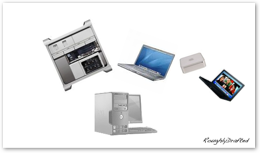
In addition to the conflicts between Microsoft and PC makers, there is also Intel and other chip makers who work to expose and highlight their own technologies, and run into problems on both ends of the PC world.
Intel not only duels with PC makers, but also has issues with Microsoft. Intel’s efforts to introduce EFI firmware in the PC world were rebuffed by both Microsoft and manufacturers in a fitful catch-22. The same thing happened with Intel’s USB, and in other efforts to modernize the creaky old PC design.
Since Apple runs its own show, it was able to adopt both USB and EFI rapidly and decisively. Both provided Apple’s end users with distinct advantages over the PC, which still struggles with BIOS, parallel ports, PS/2 and other legacy headaches.
Disintegrated Disadvantages
PC enthusiasts like to create an artificial comparison scenario that evaluates Windows solely on its own merits as a product. This is flattering for Microsoft, because within its software offerings, there is a lot of integration.
However, just as the major reasons for choosing Windows involve external market realities such as compatibility, software availability, and support resources, some the biggest real world problems and disadvantages of Windows are also due to circumstances beyond Microsoft's control.
Many (but not all) of the strikes against Windows are related to its limited integration with problematic hardware partners and backward support for third party mistakes, creating a poor overall experience for users.
The PC Experience
Microsoft doesn't sell its own PC hardware, but rather partners with other hardware makers. This has isolated Microsoft from the risk of cutthroat competition in the hardware market, but also meant the company had to support a wide variety of whatever hardware components manufacturers decided to use, from the cutting edge of the high end down to the bargain basement.
Microsoft has done a great job of supporting a huge range of hardware in Windows. Competing products, from OS/2 to NeXTSTEP, generally lacked the development resources to support every random network card and video chipset in existence; the extensive hardware support in Windows helped to buffer it from direct competition.
However, the massive resources required to support a nearly infinite array of components also took its toll on Microsoft. In the 1990s, Microsoft worked with hardware vendors to create the Multimedia PC, which attempted to standardize a minimum specification for a sound card, video support, CD-ROM, and PC system resources. The MPC was a direct attempt to civilize the PC into something closer to Apple's highly integrated Macintosh.
The Advantage of Limited Support
Microsoft has since continually worked with Intel and PC manufacturers to further standardize the PC. Those efforts have helped to limit the range of odd ball hardware vendors throw in their machines, and make sure that basic machines have the minimum requirements to run the current version of Windows.
These efforts have also served to make PCs a commodity. There's little reason to get Dells instead of HPs, because they are all PCs that can run Windows.
Despite Microsoft's efforts, PC makers still act in their own interests to shave costs and remain competitive. Dell's highly efficient, high volume operation requires it to put whatever parts are available in its machines, while HP's emphasis on shipping cheaper and cheaper boxes forces it to use low quality parts.
Both HP and Dell were commonly using ancient PS/2 components up to this year, rather than USB, just to save a few cents on each machine.
Anyone who supports fleets of PCs knows that even within a single model of a PC, there can be a variety of different components used, each requiring different drivers that all need to be upgraded separately. Windows struggles to provide plug and play support for all these different variables, but the end result is far more complicated and ugly than the experience Apple can offer.
Dual Vendor Finger Pointing
Few other consumer products present the frustrating complexity of the dual vendor PC. Even Microsoft has abandoned the idea of licensing software on other's hardware in the consumer electronics arena. Both the Xbox and the Zune follow the same integrated strategy of Apple's Mac and iPod.
Windows Vista can't. It's stuck in a business model that has long been hailed by analysts as the only road to success, but it's increasingly obvious that that model really doesn't work well, particularly in the consumer space. It's frustrating to have a problem with a PC and be pointed back and forth between hardware and software vendors who blame each other.
This effect is complicated by the fact that Microsoft and its hardware partners often work at cross purposes. PC makers want to sell lots of boxes, but Microsoft wants to push buyers into more expensive version of Windows. With Vista, Microsoft now offers a confusing array of versions from a completely neutered Home Basic up to an expensively super duper Ultimate edition.
Now Is the Winter of your Discontent!
Just as Microsoft doesn't care which PC makers sell Windows, PC makers don’t care too much about which version of Windows they sell. They only bundle Windows so their machines have minimal functionality out of the box.
That’s why IBM and Novell are now pushing Linux over Vista, why Acer is complaining about Vista’s higher price, and why Dell would love to license Mac OS X.
The lack of a smoothly integrated experience is a significant disadvantage of Vista in any comparison with Leopard, but there are additional problems in the core development of Vista that will affect the overall experience that Leopard and Vista provide consumers.
This Series









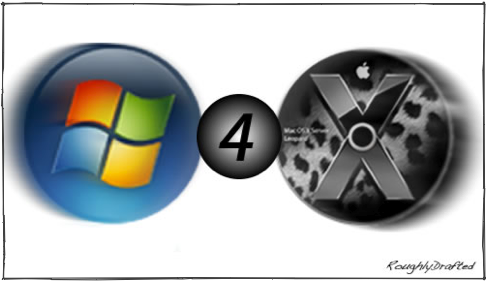
Saturday, November 18, 2006

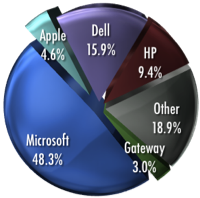
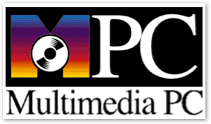
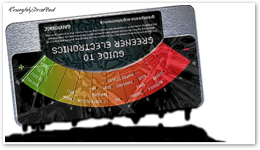
 Bookmark on Del.icio.us
Bookmark on Del.icio.us Discuss on Reddit
Discuss on Reddit Critically review on NewsTrust
Critically review on NewsTrust Forward to Friends
Forward to Friends
 Get RSS Feed
Get RSS Feed Download RSS Widget
Download RSS Widget





